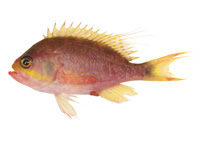Abstract
Xenophyophores are a group of large foraminifera, confined to deep-sea habitats below ~500 m, whose often fragile agglutinated tests may attain sizes up to 10–15 cm or more; their agglutinated tests incorporate a variety of foreign particles (termed ‘xenophyae’), including mineral particles, foraminiferan and radiolarian tests, diatom frustules and sponge spicules, and form structures ranging from simple tubes, plates and rounded lumps to complex folded, branching or reticulated formations (Tendal, 1972). Xenophyophores are widely distributed around the world, particularly in the Pacific and Atlantic Oceans with comparatively few records from the Indian Ocean and from Arctic and Antarctic seas; they occur at all depths in the oceans from ~500 m to >10,900 m (Tendal, 1972, 1996) and are particularly abundant in regions of high surface production, for example beneath upwelling zones, or on seamounts and sloped topography where particle flux is high (Levin and Gooday, 1992). There are scant records regarding xenophyophores in the SE Pacific. Species of the order Stannomida are recorded from the Ecuador and Peru margins (north of ~12°S) (Tendal 1972: Figs 18, 19), while species of the order Psamminida are common in the DISCOL experimental area of the Peru Basin (~7° 4ˈS, 88° 28’W; ~4150 m depth). Maybury and Evans (1994) illustrated two specimens of an undescribed Psammina species collected during the 1989 DISCOL campaign, but otherwise these collections remain largely unpublished.
References
Araya, J.F., Aliaga, J.A. & Araya, M.E. (2016a) First record of Lillipathes ritamariae Opresko and Breedy, 2010 (Cnidaria: Antipatharia) in the southeastern Pacific Ocean. Marine Biodiversity, 1–5. [published online]
https://doi.org/10.1007/s12526-016-0591-1Araya, J.F., Araya, M.E., Mack, M. & Aliaga, J.A. (2016b) On the presence of Distichoptilum gracile Verrill, 1882 (Octocorallia: Pennatulacea) in the southeastern Pacific. Marine Biodiversity, 1–5. [published online]
http://dx.doi.org/10.1007/s12526-016-0616-9
Araya, J.F., Catalán, R. & Aliaga, J.A. (2016c) A new deep-water Astyris species (Buccinoidea: Columbellidae) from the southeastern Pacific. Zootaxa, 4139 (1), 140–144.
https://doi.org/10.11646/zootaxa.4139.1.11Dawson, E.W. (1992) The marine fauna of New Zealand: Index to the fauna: 1. Protozoa. – Memoirs of the New Zealand Oceanographic Institute, 99, 1–368.
Gooday, A.J., Holzmann, M., Goineau, A., Pearce, R.B., Voltski, I., Weber, A.A.T. & Pawlowski, J. (2017) Five new species and two new genera of xenophyophores (Foraminifera: Rhizaria) from part of the abyssal equatorial Pacific licensed for polymetallic nodule exploration. Zoological Journal of the Linnean Society. [published online]
https://doi.org/10.1093/zoolinnean/zlx093/4757204Gooday, A.J. & Tendal, O.S. (1988) New xenophyophores (Protista) from the bathyal and abyssal north-east Atlantic. Journal of Natural History, 22, 413–434.
https://doi.org/10.1080/00222938800770301Hayward, B.W., Tendal, O.S., Carter, R., Grenfell, H.R., Morgans, H.E.G., Scott, G.H., Strong, C.P. & Hayward, J.J. (2007) Phylum Foraminifera. Foraminifera and Xenophyophores. In: Gordon, D.P. (Ed.), The New Zealand Inventory of Biodiversity: A Species 2000 Symposium Review. Canterbury University Press, Christchurch, pp. 242–287.
Kamenskaya, O.E. (2014) Deep-sea fauna of European seas: An annotated species check-list of benthic invertebrates living deeper than 2000m in the seas bordering Europe. Xenophyophores. Invertebrate Zoology, 11 (1), 254–258
Levin, L.A. & Gooday, A.J. (1992) Possible roles for xenophyophores in deep-sea carbon cycling. In: Rowe, G.T. & Pariente, V. (Eds.), Deep-Sea Food Chains and the Global Carbon Cycle. Kluwer Academic Publishers, Dordrecht, pp. 93–104.
https://doi.org/10.1007/978-94-011-2452-2_6Levin, L.A. & Thomas, C.L. (1988) The ecology of xenophyophores (Protista) on eastern Pacific seamounts. Deep-Sea Research, 35, 2003–2027.
https://doi.org/10.1016/0198-0149(88)90122-7MacDiarmid, A., Bowden, D., Cummings, V., Morrison, M., Jones, E., Kelly, M., Neil, H., Nelson, W. & Rowden, A. (2013) Sensitive marine benthic habitats defined. Prepared for Ministry for the Environment. NIWA Client Report No, WLG2013-18, 1–72.
Maybury, C.A. & Evans, K.R. (1994) Pennsylvanian phylloid algae interpreted as shallow-water xenophyophores. Lethaia, 27, 29–33.
https://doi.org/10.1111/j.1502-3931.1994.tb01551.xTendal, O.S. (1972) A Monograph on the Xenophyophoria. Galathea Reports, 12, 1–99.
Tendal, O.S. (1975) The xenophyophores of New Zealand. Tuatara, 21, 92–97.
Tendal, O.S. (1976) Synoptic checklist and bibliography of the Xenophyophorea (Protista), with a zoogeographical survey of the group. Galathea Reports, 17, 79−101.
Tendal, O.S. (1996) Synoptic checklist and bibliography of the Xenophyophorea (Protista), with a zoogeographical survey of the group. Galathea Reports, 17, 79–101.
Tendal, O.S. & Gooday, A.J. (1981) Xenophyophoria (Rhizopoda, Protozoa) in bottom photographs from the bathyal and abyssal NE Atlantic. Oceanologia Acta, 4, 415–422.
Tendal, O.S. & Lewis, K.B. (1978) New Zealand xenophyophores: upper bathyal distribution, photographs of growth position and a new species. New Zealand Journal of Marine and Freshwater Research, 12, 197–203.
https://doi.org/10.1080/00288330.1978.9515741

